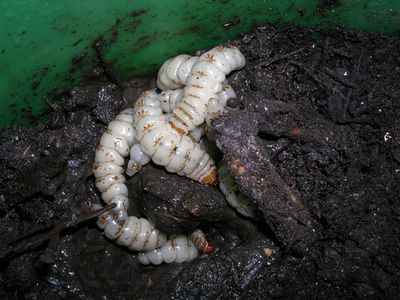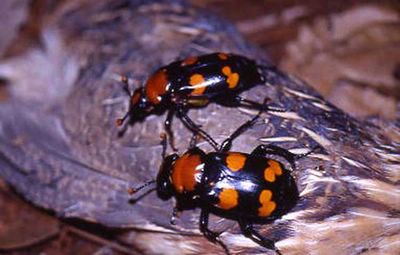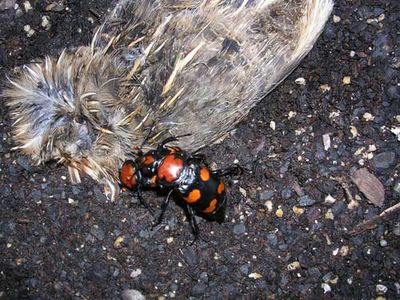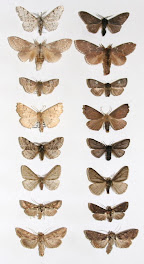Here are the baby pictures (aren't they beautiful):

 .
.Like all doting parents the St. Louis Zoo has a video of the babies.
Here are the beetle facts of life:
The “ingredients” for beetle romance at the Zoo might sound a little odd -- a dead quail and a bucket. To begin the process, our keepers fill a bucket with dirt, place a dead quail on top, then put the male and female beetle in the bucket.
The beetle pair buries the quail, then embalms it using oral and anal secretions. (Embalming the dead animal ensures its “freshness” when the hatchlings are ready to eat.) After the two beetles mate, the female lays her eggs in the soil.
The eggs hatch into small white grubs that depend on their parents to feed them. The grubs beg for food by stimulating the parents’ mouthparts, and the parents regurgitate (throw up) food for them. A pair of beetles sometimes cares for as many as 30 babies at a time this way!
The beetle parents feed the babies for most of their larval life. When the grubs are large enough, they leave the brood chamber and dig down deeper in the soil to pupate (turn into adults). Only then is the parents’ job done. The male emerges from the soil first, followed by the female a few days later. The shiny new adult American burying beetles finally pop up above the soil between 45 and 60 days after their parents first buried their "brood" quail.
Here are what the adults look like:


"These insects are responsible for recycling decomposing components back into the environment."


Go here to learn more!








